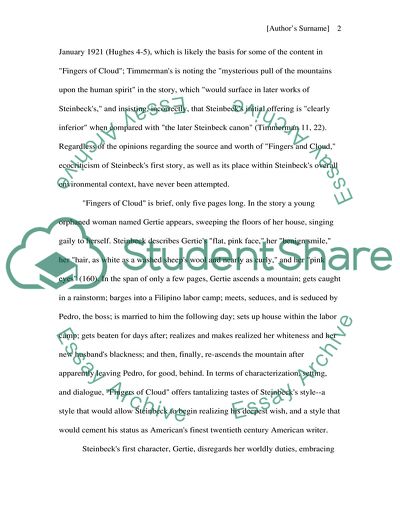Steinbeck's Works: the Circular Structure of Fingers of Cloud Literature review Example | Topics and Well Written Essays - 1500 words - 2. https://studentshare.org/literature/1759639-research-paper-on-some-aspect-of-john-steinbecks-life-or-work
Steinbeck's Works: The Circular Structure of Fingers of Cloud Literature Review Example | Topics and Well Written Essays - 1500 Words - 2. https://studentshare.org/literature/1759639-research-paper-on-some-aspect-of-john-steinbecks-life-or-work.


